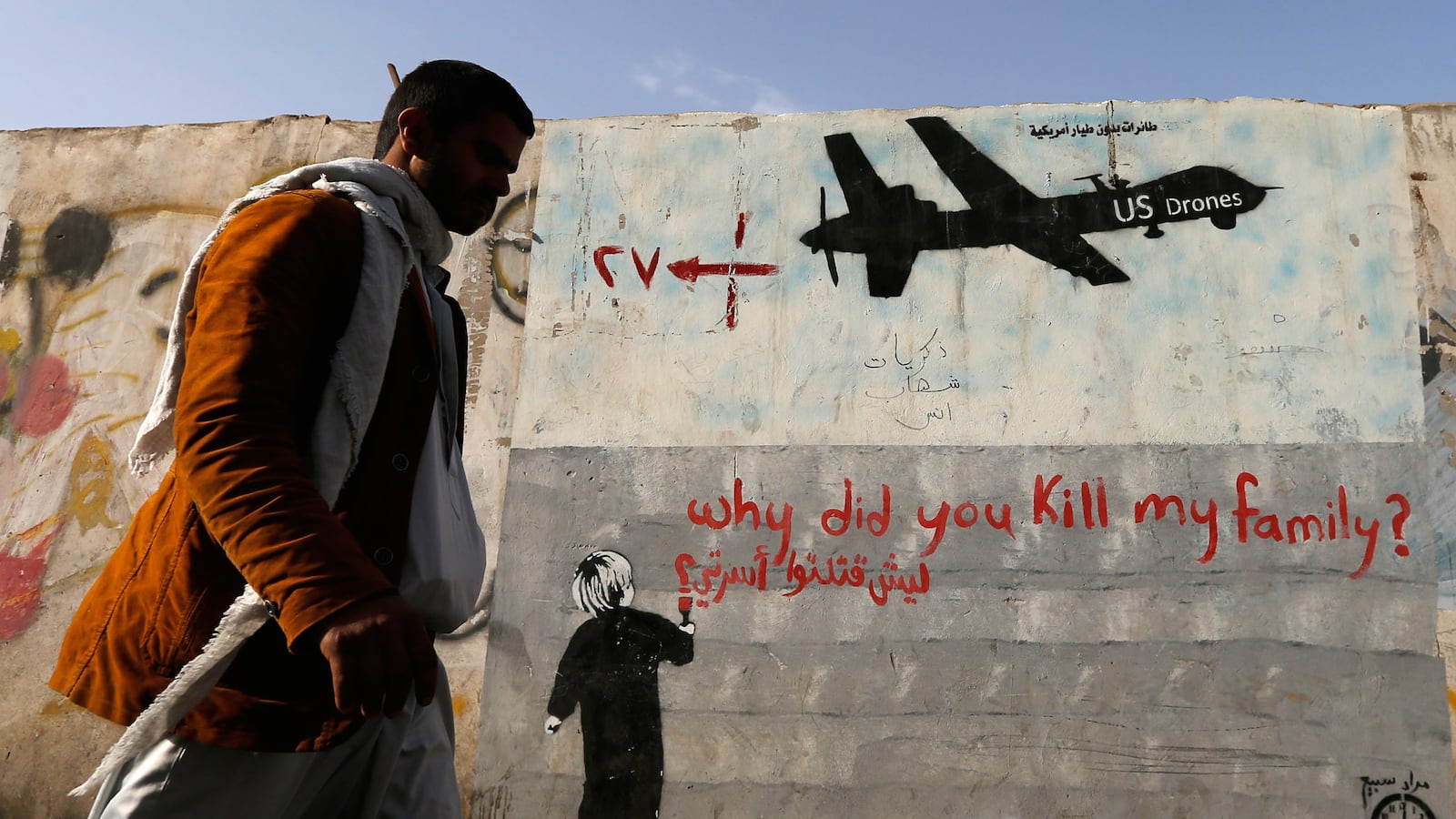Remember the so-called “Yemen model,” the seeming success story for a U.S. policy targeting terrorists that President Barack Obama pointed to a few months ago? Well, it’s not a model anyone would want to point to anymore.
While the world’s attention has been focused on the atrocities and momentum of the so-called Islamic State in Iraq and Syria, Yemen is teetering on the verge of an all out sectarian civil war. And that’s not the worst of it: the lessons that should have been learned in Yemen, and that ought to apply in the fight against ISIS, have been largely ignored.
As the U.S. administration ought to have understood, and the new Congress must try to comprehend, guns and drones don’t solve these problems and they’re not even very effective at slowing them down. What’s needed is a much broader long-term strategy genuinely committed to the the development of good governance and economic and political opportunity. These are not easy goals to achieve, in fact they are extremely difficult, but let’s look at the alternative.
Here’s the state of play in Yemen:
Following years of grievances against the central government, years of poverty, marginalization, and disenfranchisement, thousands of Yemenis took to the streets in protest in 2011. A transitional government was elected and a national dialogue took place to address key grievances. But the suffering of the people continued. Across Yemen, an estimated 14.7 million men, women and children—nearly 50 percent of the population—are in need of humanitarian aid. Thirteen million people lack access to safe water, 8 million lack access to health care and 10 million lack sufficient food. Youth unemployment currently stands at over 50 percent, and that in a country where half the population is under the age of 18.
The Houthis, a Zaydi-Shia group based in northern Yemen, exploited popular discontent and stormed the capital, Sana’a, in September. They seized key government buildings and forced the resignation of then Prime Minister Mohammed Basindwa. Later that month, a peace deal was signed between the Houthis and the central government.
But this week, even as a new cabinet was sworn in, the Houthis showed no signs of honoring their commitment to demobilize. They have continued to man roadblocks and checkpoints throughout the capital. They’ve also continued their push farther south into territories under the control of Ansar Al Sharia, better known in Washington as Al Qaeda in the Arabian Peninsula or AQAP, one of the most active and dangerous of al Qaeda’s affiliates.
AQAP has been calling on Sunnis across Yemen to support a ferocious campaign against the Shia Houthis, and some of its members have been linking up with, yes, ISIS in Iraq and Syria. Yemen now reportedly hosts a group calling itself the Islamic State Supporters in the Arabian Peninsula and, in addition, a former AQAP commander has personally pledged allegiance to ISIS leader Abubaker al-Baghdadi.
A third group, Al-Hirak Al Janoubi, is gaining ground with calls for southern Yemen to secede. On October 14, Al Hirak held its largest protest ever with more than 100,000 people attending a rally in the port city of Aden.
At the regional level, alliances are shifting. The Houthis have long been adversaries of Saudi Arabia, which claims the Houthis are backed by Iran and may have ties to Hezbollah. Neither Iran nor Hezbollah has confirmed these links, but the rhetoric and campaign style of the Houthis mirrors that of both. With the Houthi rise to power, Iran’s interest in the country could grow as well.
Over the last several weeks, the failure of the United States and its allies and partners in the region to address adequately the political, economic and humanitarian situation in Yemen has become shockingly clear.
The U.S. military is preparing evacuation plans for embassy personnel and commercial airlines have delayed resuming flights to Sana’a. Recent economic sanctions, imposed by the U.S. and the U.N. on ex-President Ali Abdullah Saleh and on two Houthi rebel commanders, may be too little too late. The emerging power dynamics in Yemen are undermining U.S. gains against Al Qaeda and strengthening ISIS.
There is no question that the lack of a comprehensively implemented foreign policy in Yemen—including serious development assistance—has contributed to the current situation. When the rule of law and political transition fail to bring about change, disenfranchised and marginalized groups take up arms. The Houthis have done exactly this and have shaken the already fragile government of Yemen to its foundations. The country is now set on a path towards becoming a failed state.
In Yemen, focusing too narrowly on counter-terrorism objectives has enabled this recent shift in power. We cannot afford to make the same mistakes in the fight against ISIS.
In both conflicts, the long-term solution lies in a comprehensive response to the growing threat. Dismantling ISIS will only be possible with a multi-year strategy that, ultimately, supports and sustains development objectives not simply narrow counterterrorism objectives. Rather than fighting ISIS with airstrikes and ground troops, Congress, and our allies in the fight against ISIS, must look at longer-term goals that can provide the local population with viable alternatives to extremism.
The Yemen model isn’t working in Yemen. But not for the reasons that conservative Republicans might think. The lesson from Yemen is not more military intervention. The lesson we need to learn, to legislate and to implement is one of holistic interventions that address legitimate grievances and that support economic and development goals alongside the use of force. Whether in Yemen or in Iraq and Syria, this is the only way to tackle the long-term threat of terrorism.







